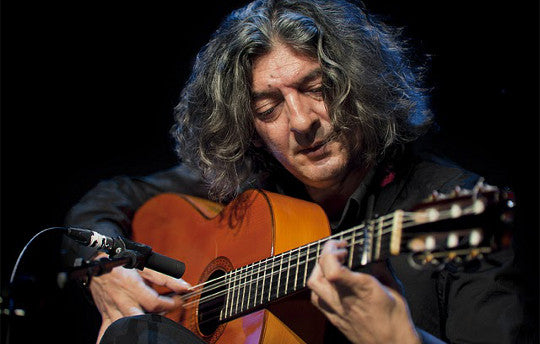Your Cart is Empty

Today, World Music Network releases it's latest compilation album, The Rough Guide To Flamenco Guitar! Considered by many as the most technically demanding of all musical styles to play on guitar, no art form truly expresses the very soul of Spanish culture like flamenco. Bringing together today’s flamenco guitar masters, this Rough Guide unravels the mystery of one of the world’s most beautiful musical traditions, and includes a bonus album by Antonio Rey, one of the finest guitarists in flamenco today.
Flamenco guitar ripples with fluttering clusters of tightly packed notes, stately forthright-sounding melodies and virtuoso scale runs. Its historic roots run deep and thick – back to the diverse Andalusian society of the eighth century, when new Moorish rule resulted in Arabs, Berbers, Jews and Christians living in close quarters. During the fifteenth century, trade links with the New World introduced African and Latin American elements to the cultural stew. Of course, gypsy culture also made its mark with its rich folk repertoire. During the nineteenth century, flamenco was played at parties and for public entertainment. Sadly the twentieth century saw a stifling of flamenco culture in some cities when Franco’s dreaded dictatorship banned juergas (wild musical parties) in taverns. Ever a symbol of pride and resilience, flamenco thankfully survived and was revived from the 1960s onwards, with luminary performers such as Paco de Lucía injecting the vocabulary of progressive jazz to the genre.
Grounded in gypsy traditions, flamenco guitar has evolved to become a high art form and a potent symbol of Spanish culture. Arguably the most beautiful and technically demanding of all guitar styles, today’s greatest masters weave complex rhythms with breathtaking technical skill.
Order or listen to the album here!
At present, the international concert circuit celebrates flamenco guitar playing far and wide, respecting it bothas an art-form in its own right (called toque) and as an important underpinning to the other forms of flamenco - singing (cante) and dance (baile). Many of the scene’s best players are heard on this collection; Moraito was known for his heavy textural tone and formidably fast twelve-beat bulerías, Pepe Habichuela is from a dynasty of gypsy guitarists and plays with intense passion as heard on ‘Al Aire’, Ignacio Amparo takes inspiration from great master Diego del Gastor’s expressive approach and Rafael Riquini’s take is firmly modern with lightly thumping bass drum and bass guitar backing.